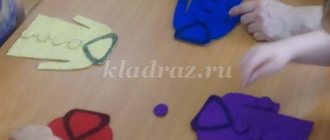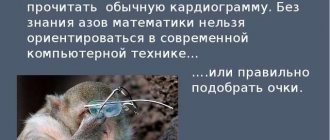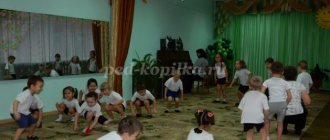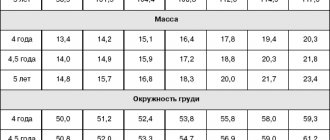Progress of the lesson:
Today we are going on a journey to the country of Geometry, to the city of Triangles .
1 Game "get directions"
.The map shows the 3 largest settlements: City
of Triangles , City of Quadrangles and City of Circles. We need to find a way to the City of Triangles .
2 Before getting into the city, children must build several triangles using Geocont.
The teacher offers to examine the resulting triangles , draws the children’s attention to the fact that the triangles have different angles: acute (called acute-angled, straight (rectangular), obtuse (obtuse)
.
3 Game “ A wizard ”
.
different types of triangles on them . Then the teacher suggests turning the sketchy drawing into a multi-colored City of Triangles . To do this, you need to finish drawing windows, doors, flowers, trees, which also have the shape of triangles , and shade them.
4 Gymnastics for the eyes (ophthalmic simulator)
.
5 Finger gymnastics.
"Nimble Fingers"
. Using all your fingers, smooth out the crumpled piece of paper.
6 Game “Dial the code”
. To get into the house, you need to decipher the lock code. You can find out by solving the following examples:
The fish are frolicking merrily
In clean, warm water.
They will shrink, they will unclench,
They will bury themselves in the sand.
8 Traveling around the city, the children meet its resident. He has a magic bag . “Identify by touch”
is played (geometric shapes in a bag)
.
9 In the second bag are treats for children ( triangular-shaped )
.
Summary of the integrated lesson “Journey to the Magic Forest” “Journey to the Magic Forest.” Goals: creating optimal conditions for a child’s cognition of each object in the totality of sensory ones. properties, qualities.
Didactic game in mathematics “Mosaic of triangles” I would like to bring to your attention a very simple and exciting game that you can very easily and quickly make with your own hands and which.
Summary of the drawing lesson “Magic Forest” Purpose: Objectives: Educational: cont. teaches children to draw using the unconventional “candle” method. Educational: to promote cognitive development.
Summary of the lesson on FEMP “Magic Bag” SYNOPSIS of direct educational activities in secondary group No. 7 in the educational field “Cognitive development” (formation.
Summary of the lesson “Magic House” Summary of organized educational activities for children of the second junior group “Magic House” Educational area “Cognition”.
Summary of the lesson in mathematics “The Magic World of Numbers” Summary of the lesson “The Magic World of Numbers” Development of elementary mathematical concepts in the preparatory group for school using.
Outline of a lesson in choreography “Magic Cube” Outline of a lesson in choreography “Magic Cube” Purpose of the lesson: • To awaken the creative interest of students in understanding the basics of dance.
Summary of the lesson on FEMP “Magic Garden” Cognitive development (FEMP): “Magic Garden” (senior group) Prepared by teacher Berezutskaya L. Yu Goal: • Continue to form.
Source
Summary of GCD for FEMP in the middle group “Triangle”
Tatiana Chermoshentseva
Summary of GCD for FEMP in the middle group “Triangle”
Goal : Consolidate the names of geometric shapes.
Tasks:
Educational: introduce children to the triangle; exercise the ability to distinguish and name geometric shapes (circle, square, triangle).
Educational: make a house out of four triangles made from a square; develop sensory sensations.
Educational: cultivate kindness, the ability to sympathize, the desire to help; support in children the desire to complete what they start, following the motivation of the game.
Materials : For the teacher: a toy bunny, two squares (large and small, cut diagonally; “Wonderful bag” with a set of geometric shapes.
For children: two cards, each of which depicts one, two or three objects.
MOVE GCD
Guys, someone will come to visit us today! And to find out who, we need to solve the riddle!
Long ear
A ball of fluff.
Jumps deftly.
Loves carrots. (Bunny)
A bunny is brought into the group.
Let's say hello to him.
A bunny came running to us today. He is very cold and asks to make a house for him from the figures that you have (4 triangles). Let's help the bunny?
The called child tries to construct a house from 4 identical triangles, placing one on top of the other, but not overlapping one on top of the other.
Children should work independently, without prompting.
Then offer to compare the houses by size.
The hare thanks the children and says that he will live in one house and his brother in the other.
What shapes did we make houses from? From triangles! Let's look at it, count how many sides and angles it has?
And now the bunny will play with you!
D/i “Wonderful bag”
The bag contains geometric shapes familiar to children: circles, squares, triangles of different sizes.
The called child determines by touch the shape of the first figure he comes across, names it and takes it out of the bag.
Children determine the correct answer.
Then the child must name any object of the same shape. After the child has completed the task, the figure is put back into the bag. The teacher calls 5-6 children so that all the completed geometric shapes are named.
Gymnastics for the eyes “Draw a triangle with your eyes”
"Guess it"
Children have two cards with different numbers of objects.
The teacher claps three times. Children count, then pick up cards with the same number of objects and explain why they showed it. For example: “I have three balls and you clapped three times.”
“Let’s teach the bunny to lay out a triangle”
Guys, the bunny asks you to show what geometric shapes can be laid out from different materials.
Consider what is on the table (thread, beans, counting sticks).
What kind of geometric figure do you think can be made from string (beans, counting sticks? Children try to make different shapes.
Well done, what beautiful geometric shapes you have created.
The teacher gathers the children around him.
Who came to visit us? How could we help him? What figure did you meet?
Let's finally treat the bunny to tea? Children set the table in the doll's corner and treat the bunny with something.
On the topic: methodological developments, presentations and notes
develop the ability to draw with gouache using a poke: develop imagination and perception of the world around you.
Summary of a drawing lesson in the middle group “Yellow dandelions on the lawn” (Drawing with cotton swabs).
Summary of a drawing lesson in the middle group of kindergarten “Yellow dandelions on the lawn” (Drawing with cotton swabs).
Summary of a drawing lesson in the middle group.
introduce the names of fruits, learn to describe fruits, compare them; develop logical thinking; develop the ability to paint with paints, wash the brush before using another paint.
This material is recommended for parents and educators.
SUMMARY OF DRAWING CLASSES IN A MIDDLE GROUP “Pyramid”.
Source
No. 1. Show your child the picture and tell him that Tanya is asking for help. You need to finish the drawing, i.e. circle all the triangles.
Will you help Tanya?
After completing the task, ask the child to show the largest triangle, the smallest.
If the child is not tired, invite him to color the picture. This can be done next time.
No. 2. Look at the picture with your child.
What do you think Tanya is doing? Listen to the child’s suggestions and tell her that Tanya is going to paint the window frames.
How many floors are there in the house? Help your child move his finger along the first (second) floor and name it.
What shape are the windows of the house? The child points to each window and names its shape.
How many round (triangular) windows are there on the first (second) floor? Show your child how to count circles (triangles) so as not to make mistakes: moving from left to right on each floor.
Tell your child that you need to start painting the frames (outline) from the top floor from left to right (show). First you need to paint the frames of all round, and then all triangular windows.
If the child shows interest in the task, then you can turn on the lights in the windows. If your baby is tired, do it next time.
No. 3. Show your child the picture.
What do you think Vanya is going to do? After the child’s answer, tell him that the neighbors asked Vanya to help build fences.
What is different about the houses around which Vanya makes fences? (One house is high, the other is low. One house has a round window, the other has a triangular window. One house is yellow, the other is green.)
The residents of the house with a round window asked to nail three more planks. The child draws and counts at the same time: one board, two, three.
Residents of a house with a triangular window want their fence to be longer. In this case, there is no need to count the boards.
No. 4. Tell your child that little Tanya really likes to do the task in her notebook.
Do you like doing this?
Invite your child to help Tanya complete the task.
Show and name all non-round objects.
Cross them out. Show your child how to cross out: with one line from the upper right corner to the lower left.
What items were left uncrossed? If your child lists these items, ask questions:
How are the uncrossed out objects similar? (They are all triangular.)
How many triangular objects are there in the picture?
Teach your child that the circles at the bottom of the picture should be colored from left to right (show), without skipping any.
Tanya thanks the child for his help.
No. 5. Tell your child that Tanya played mosaic.
What should you do after finishing the game? (You need to put away your toys.)
Invite your child to show Tanya how to do this.
What color mosaic does Tanya have?
What shape are the mosaic pieces?
Show all the small and all the big figures.
In order to put the figures in the boxes, you need to draw lines.
How many parts did you put in the red box?
How are these parts different?
How many parts did you put in the green box?
Tanya thanks the child.
Preview:
Summary of an integrated lesson in the educational areas of Mathematics, Application and artistic creativity with non-traditional drawing techniques in the middle group.
Author: Bessonova Oksana Vladimirovna, MAOU Secondary School No. 29, Lipetsk
Topic: “In the land of geometric shapes.” “Murka’s Birthday” Goal: to get acquainted with a new unconventional way of drawing - with cotton swabs and to consolidate knowledge about geometric shapes and skills in working with glue. Objectives: 1. To consolidate children’s knowledge about geometric shapes (circle, triangle, oval), about color (main shades). 2. Exercise children in composing images from geometric shapes. 3.Continue to teach children to draw in an unconventional way: using cotton swabs. 4.Develop dialogical speech in children, activate their vocabulary. 5. Cultivate accuracy when working with paints and glue. Develop fine motor skills of the hands Methodological techniques: Questions, children's answers, finger gymnastics, a surprise moment, guessing riddles, making a cat from geometric shapes, artistic words, reflection. Preliminary work: Talk about your cats, design classes, study finger gymnastics, look at object pictures. Materials: Glue, cotton swabs, blue, yellow, red, green paints, napkins, album sheet, geometric shapes 1 large triangle, 2 small triangles, 2 small circles.. Image of a cat made of geometric shapes, jars of water.
Children sit on chairs. Educator: Guys, today we are going on a journey through the land of geometric shapes. In order to get there, you need to solve riddles. I have no corners and I look like a saucer, like a medal, like a pancake, like an aspen leaf. I am an old friend to people. They call me...(circle) My riddle is short: Three sides and three angles. Who am I? ( triangle)
He has been my friend for a long time, Every angle in him is straight, All four sides are the same length. I'm glad to introduce him to you. And his name is... (square). Educator: Well done! Now close your eyes and count down. We found ourselves in the land of geometric shapes. Educator: We are in the country of geometric shapes. We are greeted by the inhabitants of the land of geometric shapes. Educator: There are two houses on the board. Some are green, the other blue. Guys, in the land of geometric shapes, all the shapes are mixed up; they need to be put into two houses. You need to put all the triangles in the green house, and only circles in the blue house. Educator: Guys, in addition to geometric figures, there is one more resident living in the country. And who is it you will find out by guessing the riddle: Pointed ears, on paws, pillows, Whiskers like bristles, arched back. Children's answer: cat
Educator: Correct. On a board of geometric shapes. Look what kind of cat Murka came to us. Beautiful, but sad. And I know why. Do you guys want to know? Children's answer: yes! Educator: Then tell me, do you like birthdays? For what? Children's answer: Lots of gifts, friends, guests, a lot of fun.
Educator: Do you think we can make a cat out of them? Let's try. But first, to amuse Murka at least a little, let's turn our fingers into kittens and play with them. Finger gymnastics One, two, three, four, five The fingers went out for a walk One, two, three, four, five They hid in the house again.
After working with glue - physical. just a minute
The gray kittens are sitting and moving their ears. They stomped their paws, patted their paws, and now they stretched, took a deep breath, and rested a little. Educator: They continue to work and draw balls with a cotton swab. After completing the work): Guys, it seems to me that now Murka will have many friends. What wonderful cats you have made. And how many balls did you draw? Our Murka will have a fun birthday. Children draw works, and the teacher places them next to Murka on the easel. It's time to congratulate her and sing a loaf of bread. Thank you guys, now I have a lot of friends and gifts - balls of different colors and shapes.
Source




